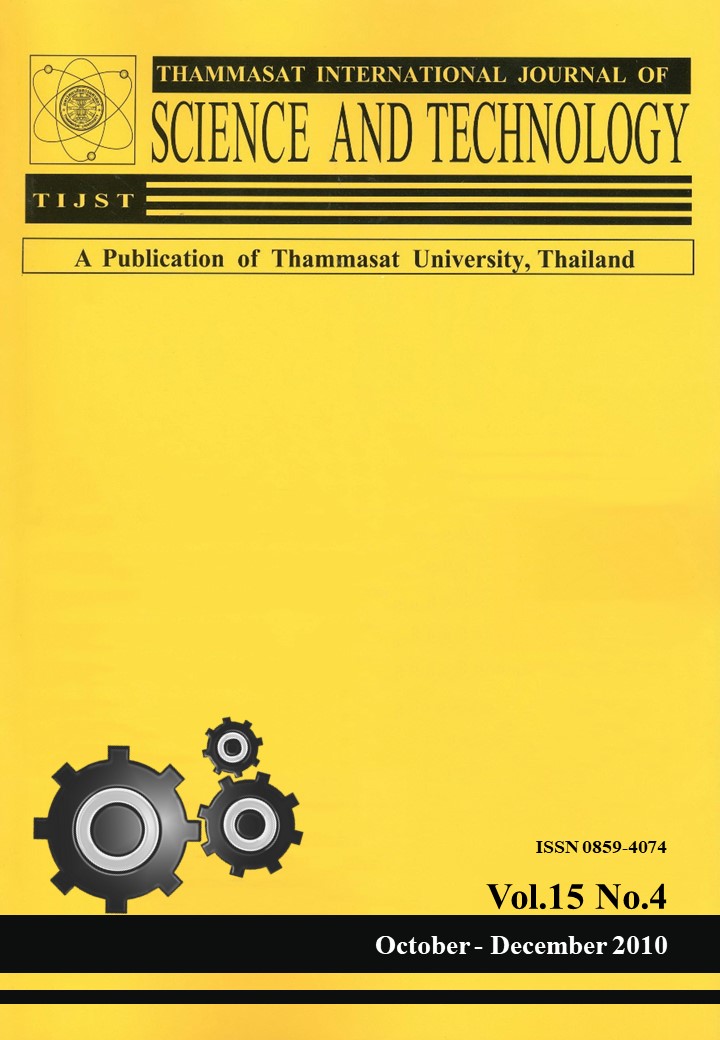Statistical Analysis and Downscaling for the Minimum, Average, and Maximum Daily-Temperatures of the Chi and Mun River Basins
Main Article Content
Abstract
This study analyses the variability of observed temperature data for the Chi and Mun river basins and describes the linkage between climate simulations given by a global circulation model, GCM, (HadCM3) and the local temperature data, based on an accepted
statistical downscaling model (SDSM). Data for average, maximum, and minimum daily−temperature records for 14 stations in the river basins were considered. The total period of the temperature data is 30 years (1976−2005). Analysis results have demonstrated that the minimum, average, and maximum temperatures tend to slightly increase during the first 15 years (1976−1990) while the trend of the other period (1991−2005) is moderate. The significant NCEP reanalysis data, such as temperature at 2 meters, surface specific humidity,
500 hPa zonal velocity, 850 hPa airflow strength, and near surface relative humidity have been used to develop the SDSMs for the linkage between the GCM outputs and the local temperatures. They have been then applied to construct the HadCM3A2 and HadCM3B2 scenarios of the temperatures during the next 20 years. Results have indicated that the range of the future minimum and maximum temperatures is wider than that of the current ones.


